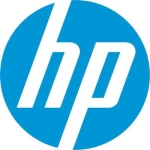What is our primary use case?
We use it as an antivirus and EDR solution. We also use it for vulnerability scanning and threat hunting.
It is cloud-based. We have a cloud-first strategy when it comes to our organization.
We are a very small, lightweight start-up organization who has only been around for a couple of years. We have 17 endpoints.
We have it deployed on our endpoints and virtual servers. We have a few Windows Servers 2019, and we have onboarded those both onto Defender for Endpoint as well. Those servers are not managed by MDM because they are Server 2019, but we have onboarded them so they are being managed by Defender for Endpoint as well.
How has it helped my organization?
This solution definitely increases our security posture. When you are reviewing your existing fleet or endpoints and based on the configuration that you put out of your Defender for Endpoint, you then receive a security score from Microsoft. Depending on what rules you have configured, what policies you have deployed, and what attack surface reduction rules that you have set up and deployed, it is almost gamifying information security in the sense that you are always trying to achieve a higher score. The more hardening you perform on your endpoints, the better score you receive. This generally tends to give you a better peace of mind, but also makes you secure at the same time.
What is most valuable?
I like the fact that it is baked into the Microsoft platform.
Since we have deployed it, we have been really impressed with the way that everything just stitches together really well. You can access all your security data and telemetry from a single pane of glass on the Microsoft Security admin console. You can access all your endpoints, see how your antivirus is running, and get all your vulnerability scans and reports. In the software inventories, you can review your known vulnerabilities and understand whether those are zero days or if there are active threats out in the wild. Essentially, you don't need to jump into different admin consoles. You have everything built into Windows Defender Security Center, which we find really useful.
What needs improvement?
If you consider our organization, we are a fairly Mac-heavy organization. At the moment, around 80% of our fleet are Mac OSs. We made a conscious decision to roll out Defender for Endpoint against all our endpoints, whether it is Windows or Mac OS. However, one thing that we have noticed is that there is definitely no parity on the platform between the two operating systems. When you are configuring, deploying, and onboarding machines, you can get very granular with your security configuration when you are deploying it to a Windows's endpoint. For Mac OS, it is a lot more straightforward. You don't have the ability to apply as much configuration as you would on Windows. That is definitely something that has room for improvement.
I am also not sure how well the EDR functionality works on the Mac OS platform. It just provides an antivirus and the full EDR capability is not there on a Mac OS.
The web filtering needs a little bit of work. We are actually in the market at the moment for a third-party web filter or cloud secure web gateway to try and plug that hole since it is a bit of a pain point for us. I don't think we will use the baked in version from Defender for Endpoint.
On the Mac OS platform, there is no parity between Windows and Mac OS. The solution is very feature-rich and very well-integrated into Windows, and I guess baked into Windows 10 and Windows 11. Whereas, on the Mac OS platform, there is still some work there to give it a more feature-reach platform.
For how long have I used the solution?
I have been using it for about a year.
What do I think about the stability of the solution?
With Windows, we have been very happy. We have had no issues or problems whatsoever. We had one issue on the Mac OS platform when an update to Mac OS was deployed. It wasn't a major update, like Monterey. It was a point update. So I think it might have been 12.2.1 where the Defender icon was starting to display across, which means I found a threat or it's not working properly. We had that across a handful of machines. I did a bunch of Google searches and sort of realized this was happening to a lot of other organizations, so it was probably a false positive.
I contacted Microsoft support who confirmed that it was just a visual glitch. I guess Apple is well-known for this. When they do push out their updates, they attempt to break the occasional third-party system. That was the only issue that we have encountered, which was more a visual glitch than an actual threat.
It is pretty much zero-touch because the definitions sort of update themselves. The application updates itself because it is deployed through Microsoft Intune. Therefore, the maintenance is pretty straightforward.
What do I think about the scalability of the solution?
It is very scalable. Because it is cloud-based, it is elastic in its nature. You can onboard machines en masse. Whether you are onboarding 15 machines or 1500 machines, it is very straightforward.
As we scale up, this is now our AV and EDR of choice. Every new machine will be rolled out or onboarded to Defender for Endpoint. We will be sticking with it in the long-term. We have also the logs and telemetry from Defender for Endpoint being ingested into our MDRC platform.
How are customer service and support?
The technical support is very good. Wherever I have worked with them, we have always been enterprise customers. Whenever I have raised a ticket for support, you generally receive a phone call anywhere from 10 minutes to three hours after raising your ticket. Even if it is not a P1, but a P2 or P3 ticket or just a request for information that you have generated in the form of a ticket, they will respond back to you quickly.
They have good levels of escalation. So, if their first line support is unable to help, they can quickly escalate to the second or third line. I have never really had any problems with Microsoft support. That is across Defender for Endpoint and Microsoft Endpoint Manager as well as for the productivity throughout Office 365 and Azure Active Directory.
I would rate them as eight out of 10.
How would you rate customer service and support?
Which solution did I use previously and why did I switch?
We currently have an MSP in place, which is a managed service provider, who manages all our IT support, service desk, and desktop support functions. They had already purchased an antivirus subscription for the organization when I joined the organization, and it was a fairly basic one. Our biggest problem was that it does not have any SIEM integration.
When we decided to go down the route of having a SOC or MDR service, we couldn't ingest the logs from the antivirus platform into their SIEM. That is when the hunt started for a new AV service.
I wouldn't say the user impact has changed on top of the AV product that we had before.
How was the initial setup?
The initial setup was very straightforward. Microsoft, as an organization, is quite well-incentivized to get you to use their own products. There are hoards of material out there via their social media channel, through their own documentation, or the Microsoft Learn platform. There are reams and reams of user guides for you to go through, all of which are fairly straightforward. They are regularly updated as well.
It is all cloud-delivered so there isn't any on-premise infrastructure that I need to maintain, patch, or configure. It is literally all configured in the cloud. So, it was a very easy setup process for me.
It took days to get a proof of concept together on a handful of machines. Over the next few weeks, once we got the go ahead and thought, "You know what? We are going to go with this." It was just a matter of weeks and that was more down to team availability. We needed to sit down and offboard the existing AV, which we weren't particularly happy with, then onboard Defender for Endpoint. So, we tied that project with our MDM rollout. Therefore, while we were deploying our MDM solution and enrolling the device, we were onboarding the machine to Defender for Endpoint as well.
What about the implementation team?
I actually set it all up myself. I am the only technical person at the organization. I have worked with Microsoft quite extensively in the past, and I have used their fast track consultancy services in other organizations that I have worked with as well. Therefore, I am quite confident and familiar with Microsoft technologies.
We then signed up with an MDR supplier who does managed detection and response. Essentially, that is a team of cybersecurity experts who connect to our infrastructure and all the data telemetry from our endpoints feed up to their platform. If they see any threats, anomalies, or events, they will then jump in, reviewing and remediating as required.
We had a consultancy session with one of their Microsoft consultants around a month ago, where they reviewed the setup that I configured. They put in two or three recommendations to harden the setup a little bit more, but they were overall pretty happy with it. Thus, if I can do it, then it can't be that difficult.
What was our ROI?
There is less overhead in terms of having the system administrator or information security manager jumping around different systems and trying to actively keep a handle on our security posture across the organization. Instead, everything is right in front of me.
What's my experience with pricing, setup cost, and licensing?
One of the first things that I did when I came onboard in the organization was scrapping our reseller agreement. I registered us as a not-for-profit with Microsoft, and we now get subsidized licensing at effectively half price. It just sort of makes sense for us. Now, we buy our licenses directly from Microsoft rather than our formal license reseller.
Even if you are not registered as a not-for-profit, the offering that they have is definitely worth consideration. This is in the sense that the E5 stack just gives you so many benefits. You get your entire productivity suite through Microsoft 365 apps. You get all your security and identity protection. You get the Defender for Endpoint and Defender for Identity. You get the cloud access security broker as well. You get Azure Active Directory Premium P2, which gives you so many good things that you can configure and deploy. You don't have to configure them on day one, but you have access to so many different tools that will protect your data, security, endpoints, and identities that you could build out a security strategy 18 months long, and slowly work your way through it, based on what you have available to you through your license.
You can purchase some add-ons, like Microsoft Threat Expert team. I have not read too much into that, but my understanding is that comes at an additional cost. Since we have a dedicated MDR and SOC sitting on top of our Defender for Endpoint, it is not something that applies to us anyway.
Which other solutions did I evaluate?
We are E5 customers. Essentially, we have the flagship license. We looked at a lot of different organizations and vendors for our antivirus needs. We spoke to the usual suspects: CrowdStrike, Sophos, and Darktrace.
Because we also have a Gartner subscription, we reached out to our Gartner analyst, and said to them, "Look, we have the E5 license and know that Microsoft doesn't have the greatest reputation when it comes to their antivirus products, but we understand they have come on a lot over the last few years. This is the direction that we proceed. We want to deploy Microsoft Defender for Endpoint. We then want to layer an external managed detection response service on top of it that will essentially provide 24/7/365 monitoring for alerts and anomalies." Gartner advised us that it has improved to the point where they are now considered one of the leaders on their magic quadrant, so we should be absolutely fine with it.
Originally, Microsoft wasn't in mind for us at all. We sort of had our heart set on CrowdStrike because we were really impressed with them. We got quite deep into advanced discussions with them and Darktrace as well.
The deciding factor for going with Microsoft was the budget. We were already paying for the E5 licensing. So, we were allowed to use Defender without any extra costs. We could just enable and configure it. We thought that we would use the budget left over to purchase a dedicated MDR service who would maintain an overall ability for all the endpoints to connect with it. We could also expand that to our Google Cloud Platform as well as our AWS and Azure Cloud environments. We could also extend that service onto our physical appliances, e.g., the logs from our on-premise firewalls, security appliances, and routers.
We felt that in terms of scaling up to get to the security posture that we needed, this might be a better solution for us. Whereas, CrowdStrike and Darktrace, at the time, were more focused on the endpoints. For example, if there was some suspicious behavior happening on our Azure Active Directory and our CEO's user account was under a brute-force attack, then CrowdStrike wouldn't necessarily pick up on such an attack because they are more focused on the endpoint rather than the cloud instances. Thus, we thought Microsoft gave us better coverage overall as well as the fact that we were already licensed for it.
It just made sense for us to go down that direction. We just felt we would have a more well-rounded approach if we went with Defender for Endpoint supported by the MDR service, who would then provide monitoring over all our cloud instances, endpoints, and on-premise infrastructure and appliances.
One of the main benefits is cost. Being an E5 subscriber, we are essentially already paying for Defender for Endpoint. However, it wasn't on our initial list of antivirus solutions when we were going out to market. We really felt that we were going to go for a managed service, such as CrowdStrike or Darktrace. When we decided to go for Defender for Endpoint, we created a cost savings. So, it was easier for us to prove the business case to our senior management.
What other advice do I have?
A good antivirus is something that sort of happily sits in the background and just pretty much does its job until it is needed. It is just sitting there constantly watching and monitoring. Then, if it does need to intervene or remediate against the threat, that is when you know, "My antivirus is happily working." We haven't had many incidents to deal with. To be honest, we have had a couple of false positives.
Definitely shortlist them in your list when you are out looking for a new vendor. What tends to happen with a lot of IT professionals is that they overlook the Microsoft offering because of the reputation that Microsoft Defender has had in the past, when it came to its consumer version. However, they have spent the last few years completely revamping their security stack. I think it offers a really well-rounded, holistic approach to cybersecurity now. They are definitely worth considering next to CrowdStrike, Sophos, and Darktrace.
A lot of organizations are probably like, "Oh, no, we don't want to get Microsoft. We don't want to get Defender. We want to get an established name," but I think Microsoft has put a lot of effort, budget, and development time into their security stack. It is a great suite.
As their Azure platform grows, they leverage that to power and drive their Defender for Endpoint. A lot of the protections that they deploy are cloud-delivered platforms. So, they are picking up telemetry from millions of different signals and endpoints. They have so much data and can see trends really quickly.
I would rate them as eight out of 10.
Which deployment model are you using for this solution?
Public Cloud
If public cloud, private cloud, or hybrid cloud, which cloud provider do you use?
Microsoft Azure
Disclosure: My company does not have a business relationship with this vendor other than being a customer.














